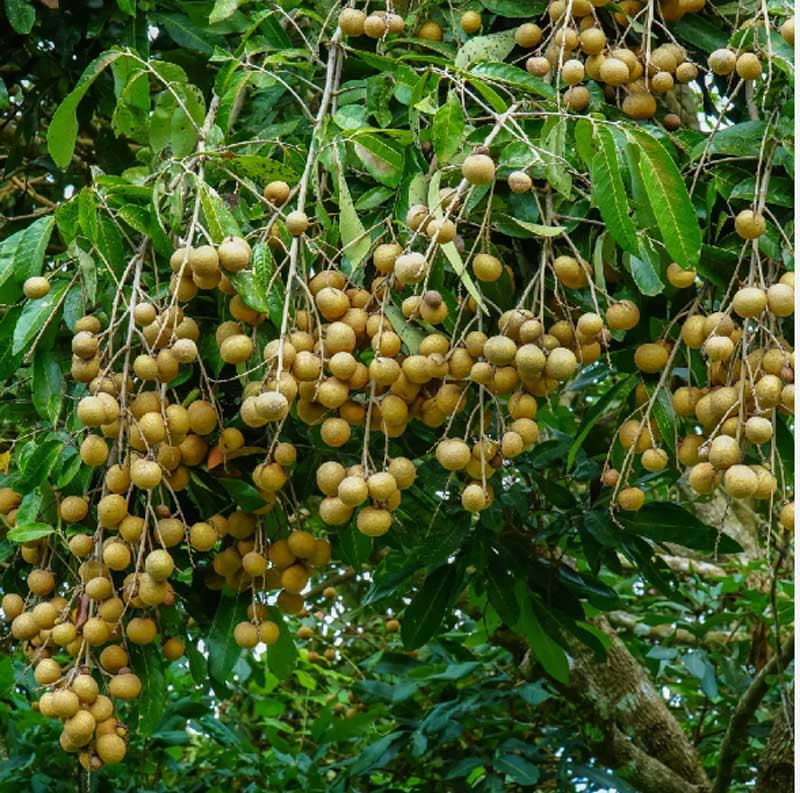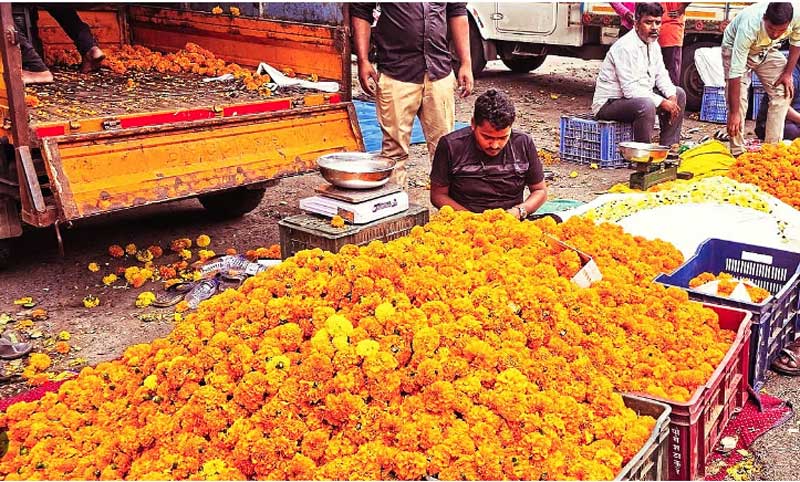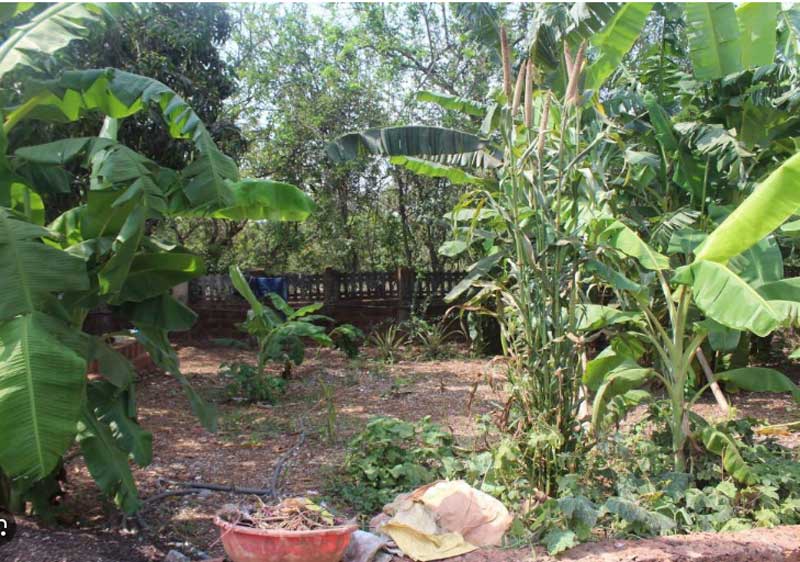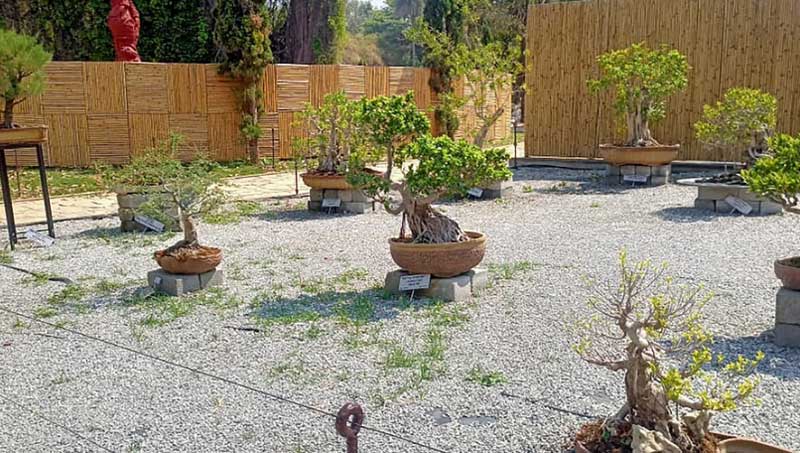Quality and quantity of flowers affected by post-harvest care
New Delhi: Flowers are nature’s gift to mankind. They are important part of human life but owing to their perishable nature, 30-50 per cent post harvest losses are observed after harvesting. Post harvest care is one of the most important factors influencing the quality of flowers. Losses occurs both, in terms of quantity and quality of flowers. Qualitative losses like consumer acceptability of fresh produce are much more difficult to assess than are quantitative losses. Quantitative losses occur during the entire market chain in view of lack of improper post harvest handling (Bhattacharjee, 2006). Post harvest technology has the potential to reduce the post harvest losses and further maintains quality and shelf life or vase life of flowers. Post harvest handling of flowers not only maintains improved flower quality but also provide an alternative of storage during period of market glut and further upsurge new avenues for development of market strategy. Evaluation of proper technology of packaging and storage of flowers also enhances export potential of flowers.
Harvesting system, post harvest management and marketing of flowers vary according to individual crops, growers, production areas and marketing systems. All these involves a series of steps like, selection, cutting, grading, precooling, bunching, special treatments i.e. pulsing, impregnation, etc., packaging, storage, marketing and distribution (Reid and Jiang, 2012).
Storage of flowers is one of such vital practice of post harvest handling of flowers. It results in orderly marketing, reduced retailer’s hazards resulting from unforeseen decline for demand, anticipating holidays, improved production efficiency; elimination of green house production in deep winters, saving energy and making possible long term shipment. The storage may be done by different methods including Cold storage (wet and dry cold storage), Controlled Atmospheric storage (CA), Modified Atmospheric storage (MA), Low Pressure Storage (LPS), etc.
- Cold storage
The Cold storage of flowers facilitates the adjustment of flowers and other planting material supplies against the market demand and enables the accumulation of large quantities of flowers. Low temperature treatment during storage or shipment period reduces the entire metabolism in the tissue and slows down the respiration of flowers. Cold storage is the common method of storing flowers. Flowers should be harvested at the optimal stage of development, should be pre-treated with an appropriate floral preservative and pre-cooled for fast and efficient cooling. It is necessary to maintain a stable and uniform temperature. In general, temperate flowers (Rose, Carnation) are stored at 0-1oC whereas subtropical flowers (Gladiolus, Jasmines, Proteas, Gloriosa, etc.) at 4-7oC and tropical flowers (Anthurium, Cattleya, Vanda, Euphorbia) are stored at 7-15oC. In cold storage, flowers can be stored dry or wet, depending upon the requirement (Senapati et al., 2016).
Wet storage
In wet storage, flowers are stored with their base dipped in water or preservative solution for a short time. During wet storage, flowers are kept at 3-4oC temperature slightly higher than that used for dry storage. The lower-most leaves are removed from the stems in order to avoid wetting and subsequent decay. The vase water may get infected by fungi, bacteria and yeast and can cause plugging of cut stem. So, water disinfection with sodium hypochlorite should be practiced in time.
Dry storage
Dry storage method is used for long term storage. In this method, fresh flowers are harvested in the morning, graded and sealed in plastic sleeves/ bags or boxes to prevent the loss of moisture. Prior to storage, flowers may be pulsed with floral preservatives containing sugar, anti-microbial and anti-ethylene compounds. Before packing in polythene sacks or boxes these should be lined with butter paper bag or newspaper. Flowers should be wrapped in soft paper to absorb condensed moisture appearing on the bloom.
- Controlled atmospheric storage (CA)
Controlled atmospheric storage refers to intentional alteration of the natural gaseous environment and maintenance of that atmosphere at a specified condition throughout the distribution cycle, regardless of environmental variation (Brody, 1989). The principles of controlled atmosphere storage for flowers are based on the close regulation of three parameters viz., temperature, oxygen and carbon dioxide. It extends storage life of flowers by reducing respiration rate, inhibiting ethylene production and action and ultimately improves quality of fresh produce.
It is an advanced storage system in which component gases are precisely adjusted to specific concentration and maintained throughout storage with highly controlled temperature. The desired mixtures of gases like 2-5% O2, 3-10% CO2 and 80-90% N2 is maintained throughout the storage duration. It is long term storage mostly used for storage of fruits rather than flowers. The use of CA storage is not much in use in floriculture industry due to high cost of application.
- Modified atmospheric storage (MA)
MA storage is a less precise form of CA storage. It can be described as a storage system in which modified atmosphere is created by altering normal air composition via a package system to provide an optimum atmosphere for increasing the storage length and quality of flowers. It is also called Modified Atmospheric Packaging (MAP) because desired atmosphere is created via a package itself. In simple, the flowers are in sealed bags which leads to reduction in O2 and increase in CO2 levels due to respiration by flowers. This increased level of CO2 reduces the biosynthesis of ethylene and hence increases the flower longevity. It is a cheaper method of flower storage as it does not require precise atmospheric conditions.
MA storage is of two types; Passive MA and Active MA storage.
4Passive MA storage creates an appropriate gaseous atmosphere around the commodity packaged in the film packages and establishes beneficial equilibrium modified atmosphere (EMA) of high CO2, low O2 and high relative humidity itself, passively (Lee et al., 1996). The high CO2 within the package results due to its release during respiration and its low efflux to the outer atmosphere through the packaging film. Low O2 within the package is maintained as a result of its consumption by the flowers and its low influx from the outer atmosphere through the packaging film. High humidity is maintained as a result of transpiration by the flowers and its low efflux to the outer atmosphere through the packaging film. The air permeability of packaging film has great influence in passive MA storage. The polypropylene (PP) has low air permeability and moisture retention properties than any other packaging material so, it is widely used for packaging.
4Active MA storage consist of displacement of gases in the package and replaced with desired ratio of gaseous components in the package. Various gases like CO2, O2, N2, and some other gases like SO2 and Cl can be used and modified with MA storage system. Inert blanketing is created through these gases within the packaging material. Both, passive and active MA storage retard physiological process of the flowers and delay senescence. High humidity within the package reduces moisture loss and retains better quality of flowers. The only drawback of MA storage is that it might lead to development of anaerobic respiration because of low O2 with the advancement of time. Day (1996) has developed a novel “Oxygen shock” or “Gas shock” which consist of high oxygen MAP (70-100%) storage system. This novel high oxygen MAP has been found to very effective in inhibiting enzymatic discoloration, preventing anaerobic fermentation and aerobic and anaerobic microbial growth (Day, 2001). However, it is yet not popularized for flowers.
- Low pressure storage (LPS) /Hypobaric storage
In this storage method, flowers are stored under reduced pressure and low temperature along with continuous moist air flow. This system is based on principle of removal of CO2 and ethylene under reduced pressure condition. It is important to supply humid air to avoid water loss in flowers. This maintains the quality of product and considerably prolongs the storage life but is highly expensive method. It is mediated by a vacuum pump which evacuates the container until the desired pressure is reached. The level of all gases is reduced and ethylene diffusion for the product is enhanced. Results from various experiments have indicated that LPS at 40-60 mm Hg is useful for prolonging vase life of several cut flowers. Cut roses at 180-210 mm Hg pressure can be stored up to 3 weeks with retention of 63% of the original vase life.
Also Read: Punjab promotes horticulture, leading to litchi export
Advances in Packaging and Storage of Important Flower Crops
- Rose
After grading, cut blooms are packed in corrugated card board boxes lined with polythene film and very fine moist tissue paper shavings are spread at end of the box to provide cushion to the blossom. The blooms are generally packed in bundles of 20 each and tied with string or rubber band. Two bundles each having 20 flowers is placed opposite to one another along length of box in such a way that the flower bud faces the side of the box and stem end towards centre. The inside of box is finally covered with tissue paper before covering the box with lid. Pre-cooled roses which are intended for air transport are frequently packed in polystyrene “caskets” to insulate them from warm outside temperatures. Ice is frequently added either as flake ice or as frozen gel-ice packages. Storage: Before packing, roses are routinely wrapped. Roses can be kept up to 2 weeks in dry storage if they are sleeved in polyethylene to reduce water loss and the temperature is maintained close to 0°C.
- Orchids
Apart from their exotic forms and colours, one of the principal attractions of cut orchid flowers is their outstanding longevity. The principal orchid genera grown for cut flowers are Dendrobium, Cattleya, Cymbidium, Paphiopedilum and Phalaenopsis. With few exceptions, these flowers are handled in the same manner. Storage: Orchid flowers are not commonly stored, because the flowers generally last longer on the plants. However, cut flowers of the genera discussed here can generally be stored for up to 2 weeks at 5-7°C. Cymbidium and Paphiopedilum flowers can be held up to 3 weeks at 1°C. Longer storage results in chilling injury. Stored flowers are saleable 3 to 4 days after removal from storage. Cymbidium and Paphiopedilum flowers can last 6 to 7 weeks on the plant.
- Gerbera
Cut gerbera flowers, known for their remarkable variety in colouration and form, are increasing in importance in international commerce. Storage: To improve their post-storage quality, gerberas can be pretreated with Silver Nano Particles before storage. Generally, gerberas should not be stored longer than 1 week at 2°C, even this short storage period can reduce subsequent vase life. Storage in chemical solutions is considered preferable to dry storage or storage in water.
- Chrysanthemum
Packing: These are packed in sleeves and are packed in display boxes of 91x43x15 cm dimensions. The blooms are kept according to grades. If blooms are large and loose, a pillow made of corrugated paper should be placed under the neck of bottom layer at each end of box. Two flowers are placed opposite to one another along length of box in such a way that the flower bud faces the side of the box and stem end towards centre. Storage: Fully open and mature, wrapped blooms can be stored dry for 3 to 4 weeks at -0.5°C.
- Anthurium
Packing: Anthuriums are normally packaged individually. They are commonly packed in moist shredded newsprint or other shredded paper. Storage: Anthuriums are very sensitive to chilling injury. Holding the flowers for any length of time at temperatures below 10°C will induce purpling, browning, and then necrosis. Anthurium flowers can be stored for at least one week if packed in moist shredded newsprint and held at 16°C. Anthuriums respond favorably to storage in a controlled atmosphere.
- Carnation
Packing: The flowers are packed after bunching in sleeves and finally in card board boxes having dimensions of 122x50x30 cm. Bunch of 25 flowers is placed in the box with one half of the total bunches oriented on each end of the container. When the box is filled with flowers, insulating layer of paper is placed across box to cover the flowers completely. Storage: Flowers are placed at 1° C in a box lined with polyethylene and newspaper. Open flowers can be stored for 2 to 4 weeks, while harvested buds can be safely stored up to 4 or 5 weeks.
- Gladiolus
Packing: Due to negative geotropism, the gladiolus spikes are packed in a box of 120x60x30 cm dimensions and stored vertically. The spikes are bundled and packed in these boxes. Between spikes, absorbent cotton may be placed near swollen flowers to prevent them from flattening due to pressure. The spikes are arranged head to tail alternatively and tied so that they remain in position. Storage: Gladiolus is generally stored at 7°C but for longer storage, they are best stored upright at 1°C.
Smart packaging
A smart package is one that incorporates new technology to increase its functionality. This includes active packaging, nanotechnology and intelligence (Rashed et al., 2024). Nano technology packaging: It uses nan oparticles which act as scavengers to remove gases. They also act as a barrier to inside and outside environment. TiO2 and Pd nano particles can be used in flower packaging which act as ethylene remover. Intelligent packaging: It uses sensors, indicators and radio frequency identification. It relies on the ability to communicate information gathered by the sensors. A variety of sensors are available which are based on chemical, enzymatic, immuno chemical or mechanical reactions in produce. Indicators works on chemical or enzymatic reaction occur into the flowers. Sustainable packaging: It reduce the use of plastic for packaging. Biodegradable material is used for packaging rather than conventional plastic film. Organic green waste of farm can be utilized and converted into biodegradable material for packaging.
References: Bhattacharjee,S.K. (2006). Advances in Ornamental Horti culture, Vol. 6, Pointer Publishers Jaipur 302 003, (Rajasthan) India. Brody A. (1995). A perspective on MAP products in North America and Western Europe. In Farber JM, Dodds KL, editors. Principles of modified atmosphere and sous-vide packaging. Lancaster (PA): Technomic. P. 13-36. Day, B. P. F. (1996). High oxygen modified atmosphere packaging for fresh prepared produce. Postharvest News and Info., 7(3): 1N-34N. Day, B. P. F. (2001). Modified Atmosphere Packaging of fresh fruits and vegetables- An overview. Acta Horticulture, 553: 585-590.
Lee, L.; Arul, J. Lencki, R. and Castaigne, F. (1996). A review on modified atmosphere packaging and preservation of fresh fruits and vegetables: Physiological basis and practical aspects-part 2. Packaging Technol Sci, 9:1-17. Rashed, N. M.; Memon, S. A.; Turki, S. M.; Shalaby, T. A. and El-Mogy, M. M. (2024). An analysis of conventional and modern packaging approaches for cut flowers: A review article. Front. Plant. Sci., 15: 1371100. Reid, M. S. and Jiang, C. Z. (2012). Post harvest handling systems: ornamental crops, Compendium, National workshop on floral craft. p. 42-53. Senapati, A. K.; Dev Raj; Ritu Jain and Patel, N. L. (2016). Advances in packaging and storage of flowers. Commercial Horticulture, pp 473-488.
By Srushti Pandya 1
By Mr. Hirenkumar Bhut 2
1 Ph.D. Research Scholar, Department of Floriculture and Landscape Architecture, Navsari Agricultural Universiy,Navsari, Gujarat-396 450
2 Horticulturist Aarti Industries Limited, Dahej, Gujarat

















